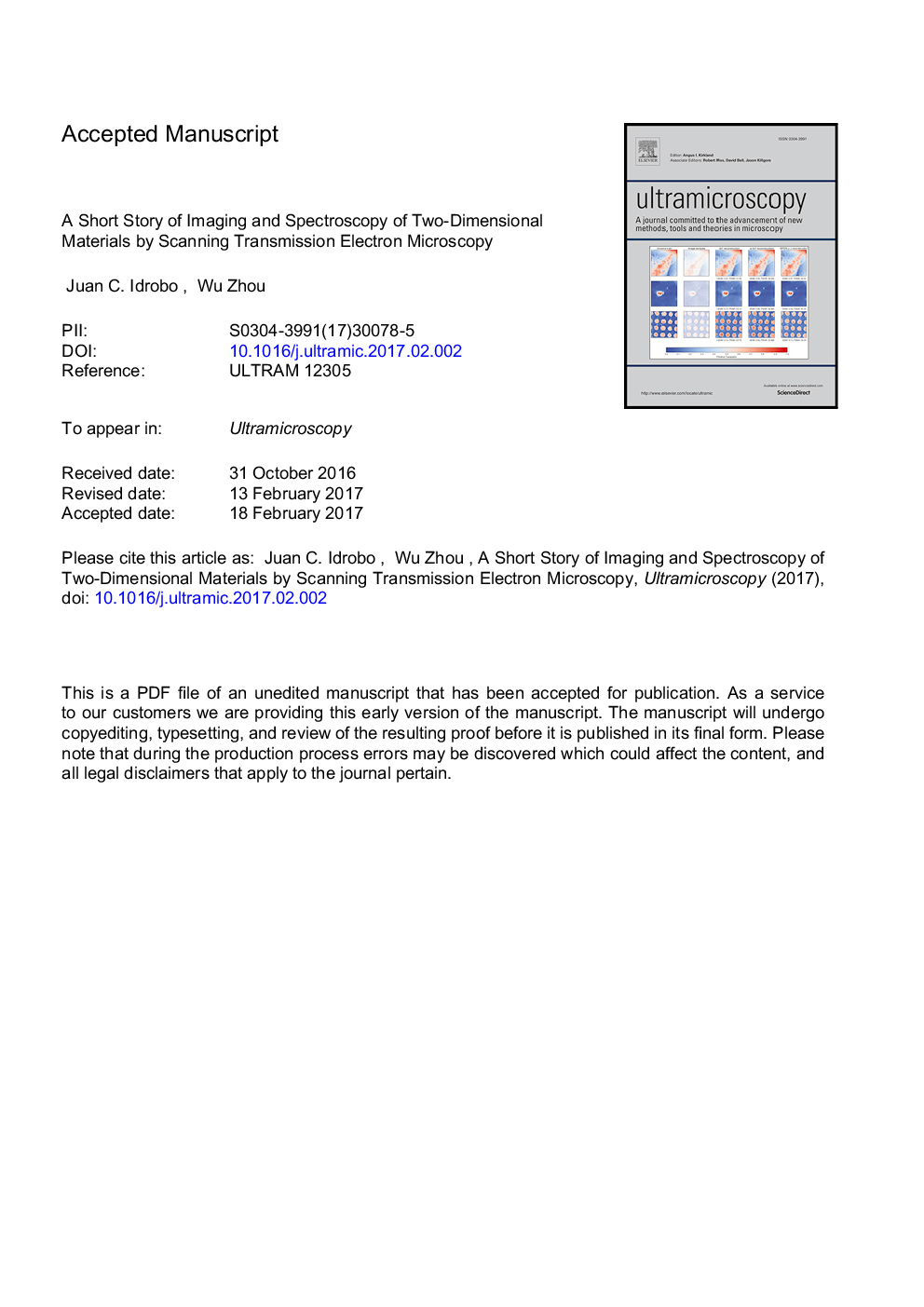| Article ID | Journal | Published Year | Pages | File Type |
|---|---|---|---|---|
| 5466737 | Ultramicroscopy | 2017 | 19 Pages |
Abstract
Here we present a short historical account of when single adatom impurities where first identified in two-dimensional materials by scanning transmission electron microscopy (STEM). We also present a study of the graphene low-loss (below 50Â eV) response as a function of number of layers using electron energy-loss spectroscopy (EELS). The study shows that as few as three layers of graphene behave as bulk graphite for losses above 10Â eV We also show examples of how point and extended defects can easily be resolved and structural dynamics can be readily capture by using aberration-corrected STEM imaging. Finally, we show that the new generation of monochromators has opened up possibilities to explore new physics with an electron microscope. All these capabilities were enabled by the development of spherical aberration correctors and monochromators, where Ondrej Krivanek has played a key role.
Related Topics
Physical Sciences and Engineering
Materials Science
Nanotechnology
Authors
Juan C. Idrobo, Wu Zhou,
